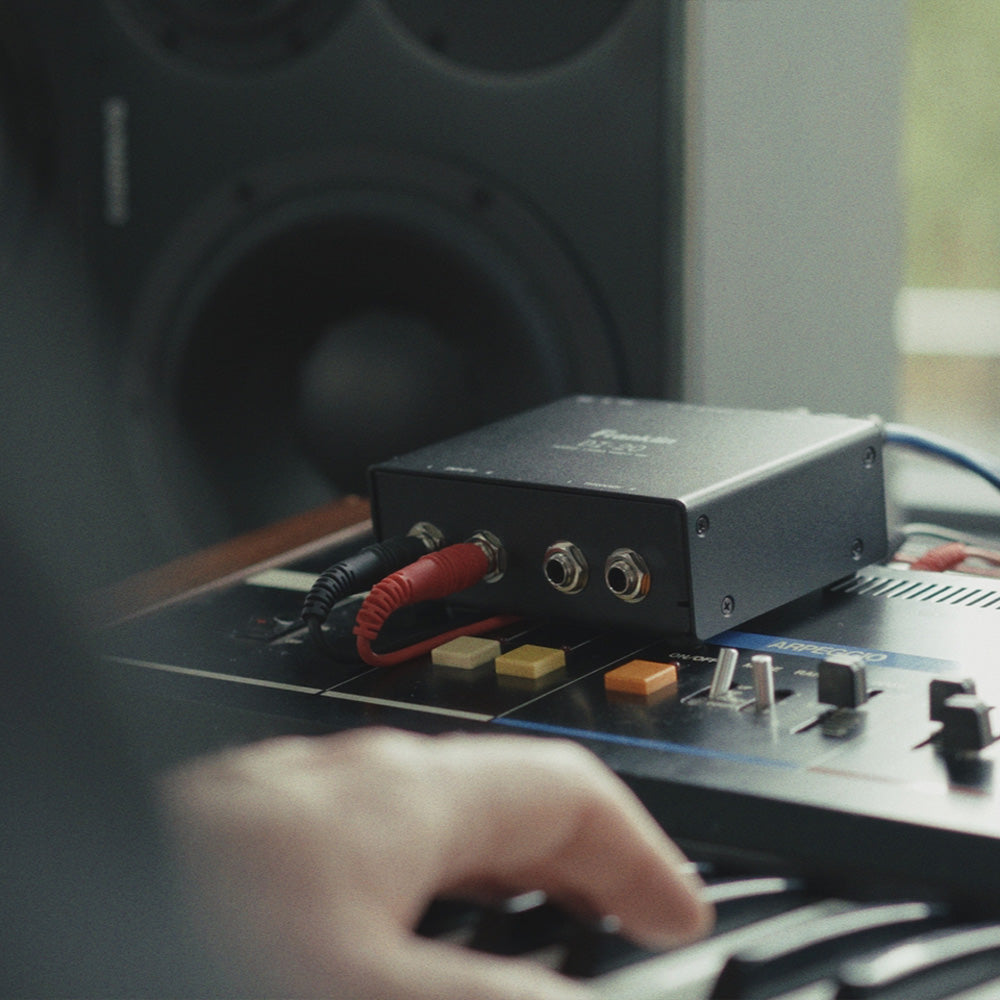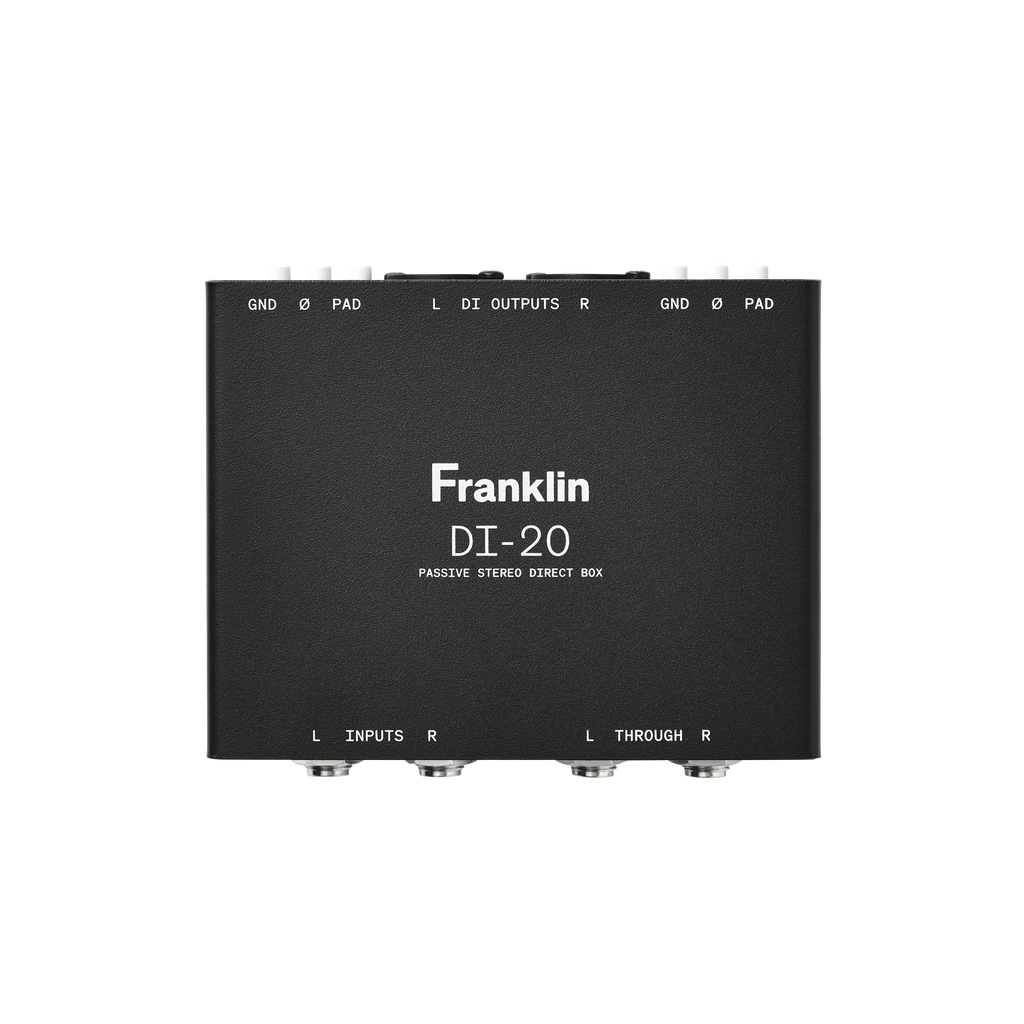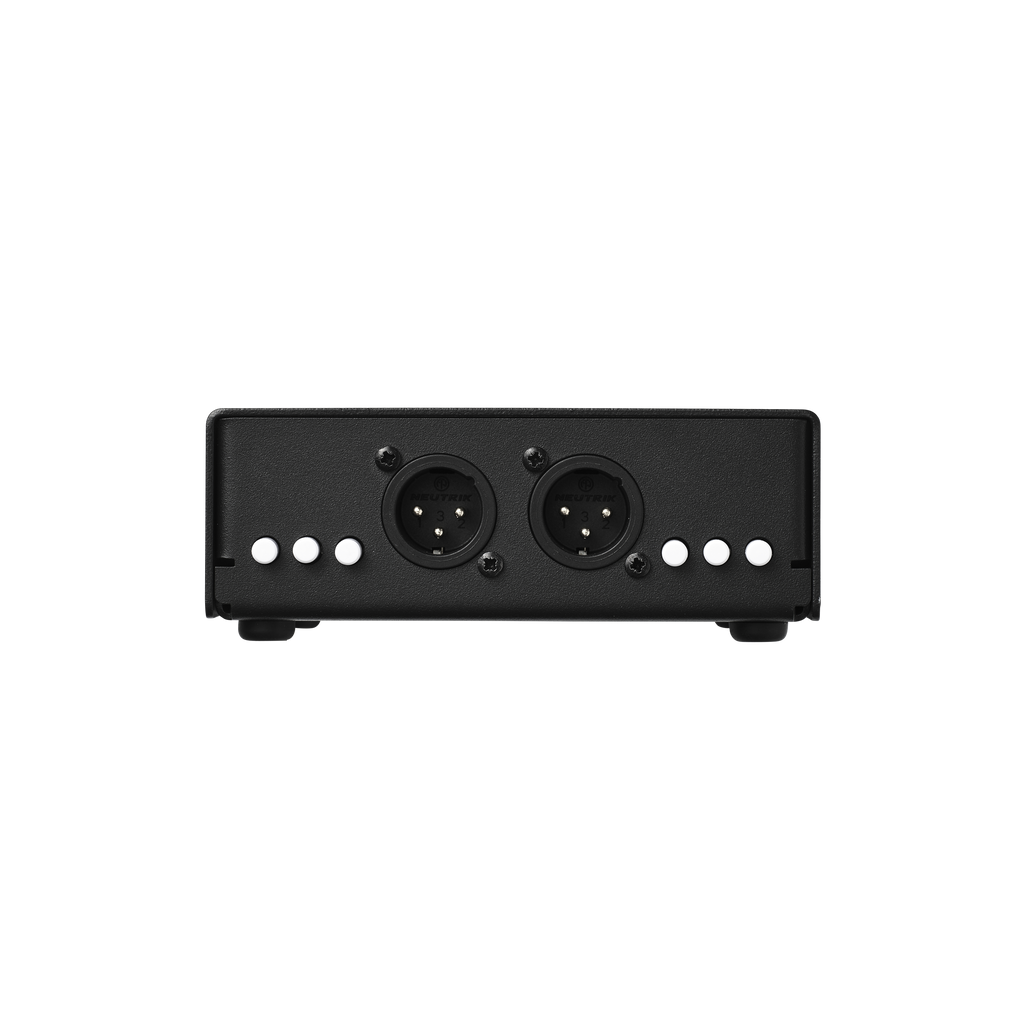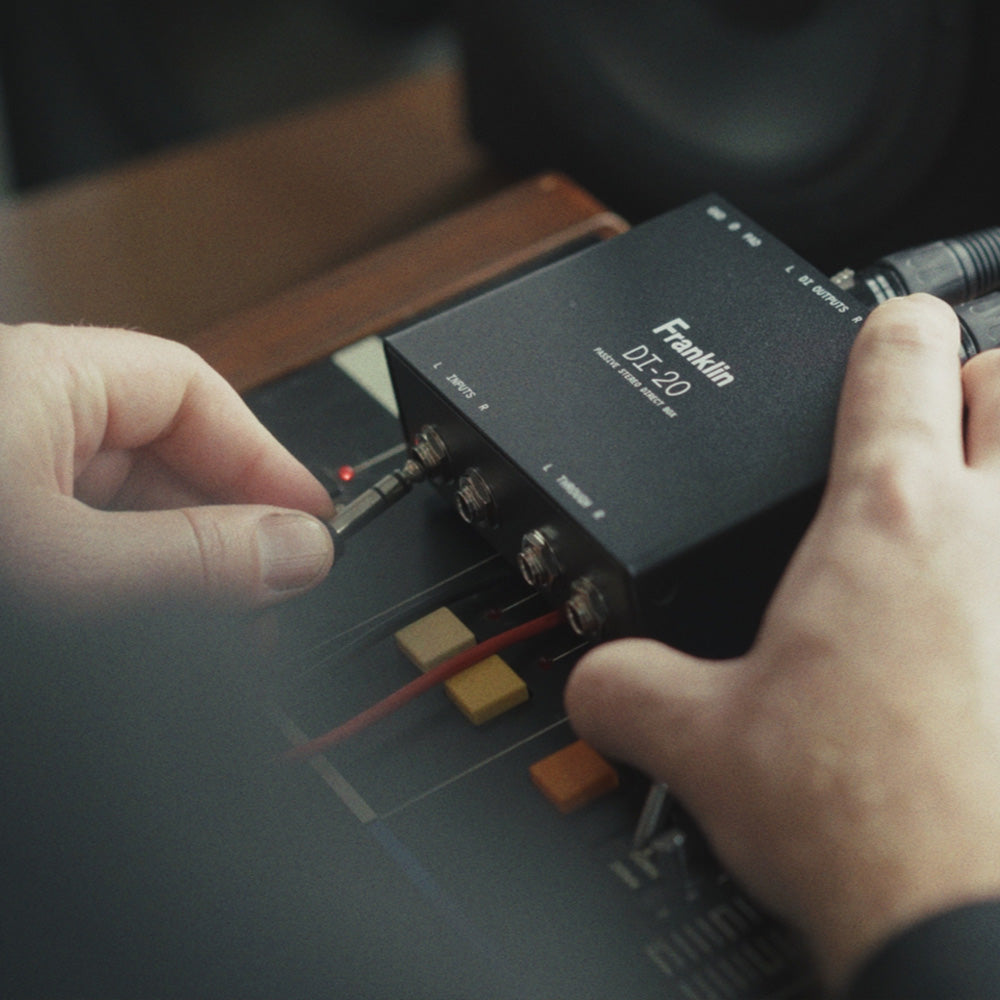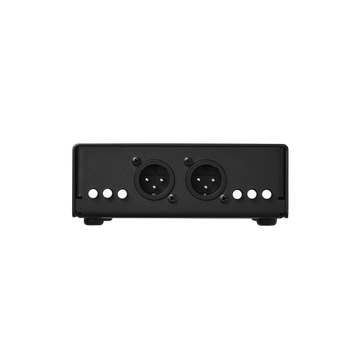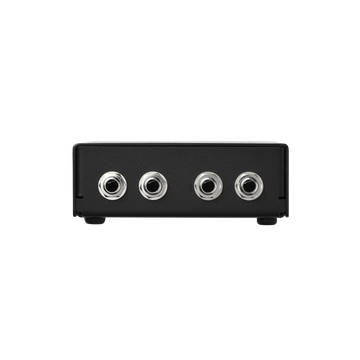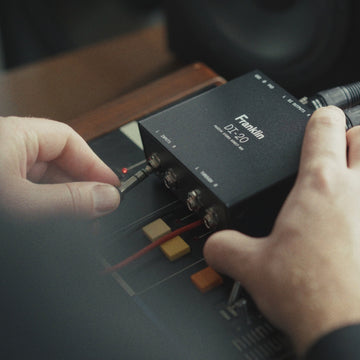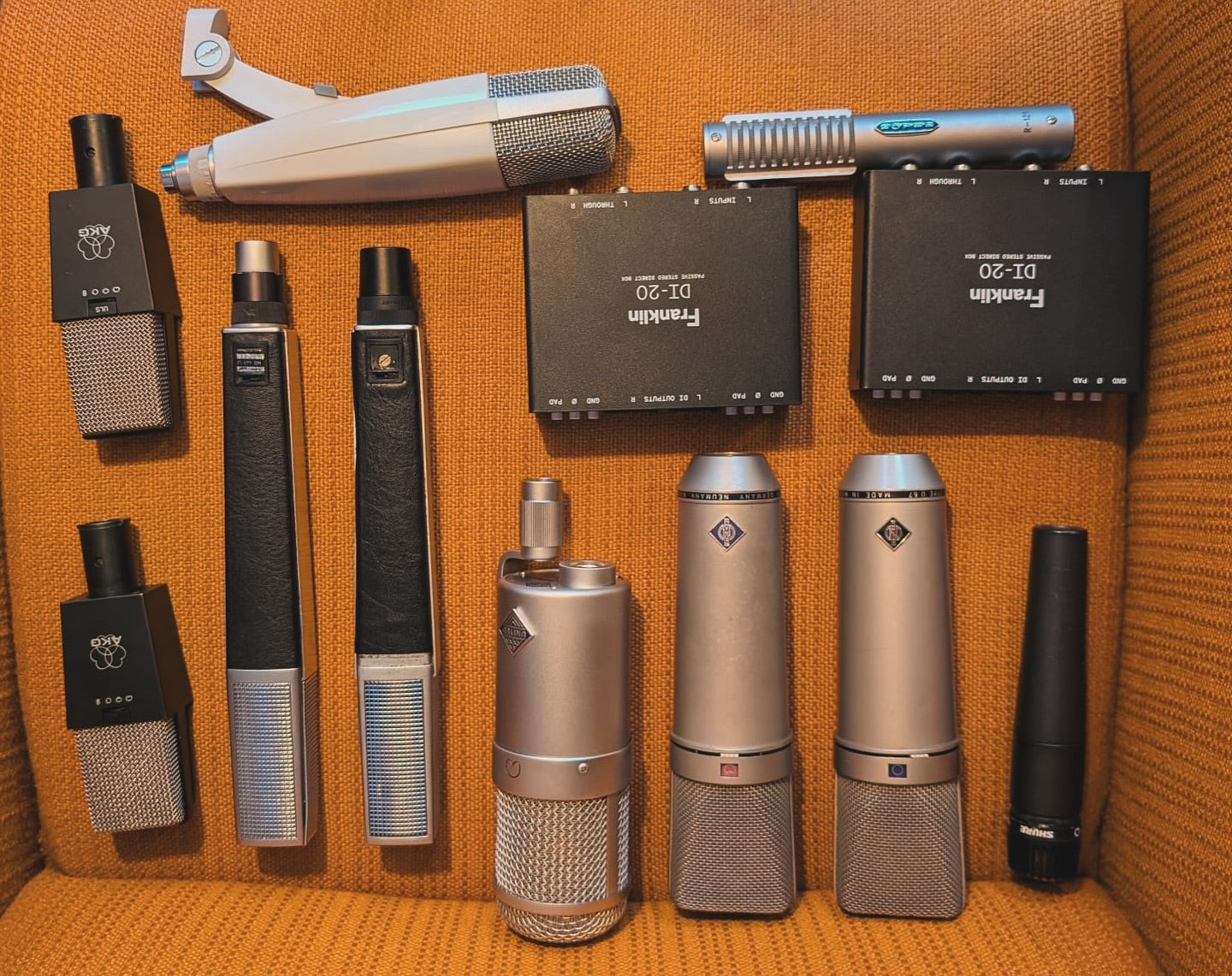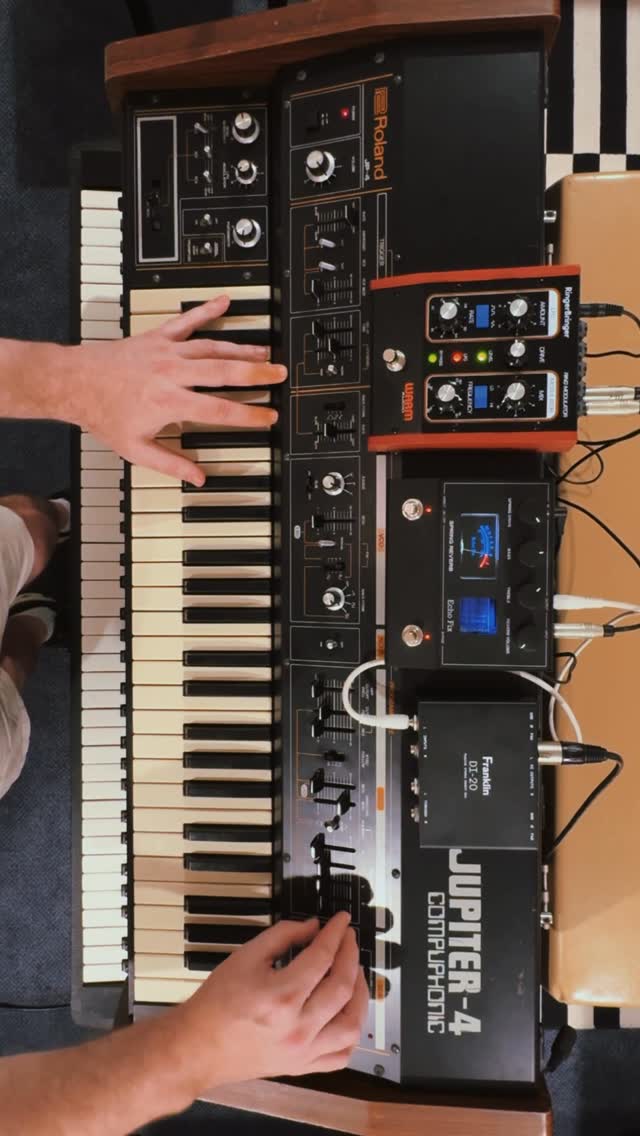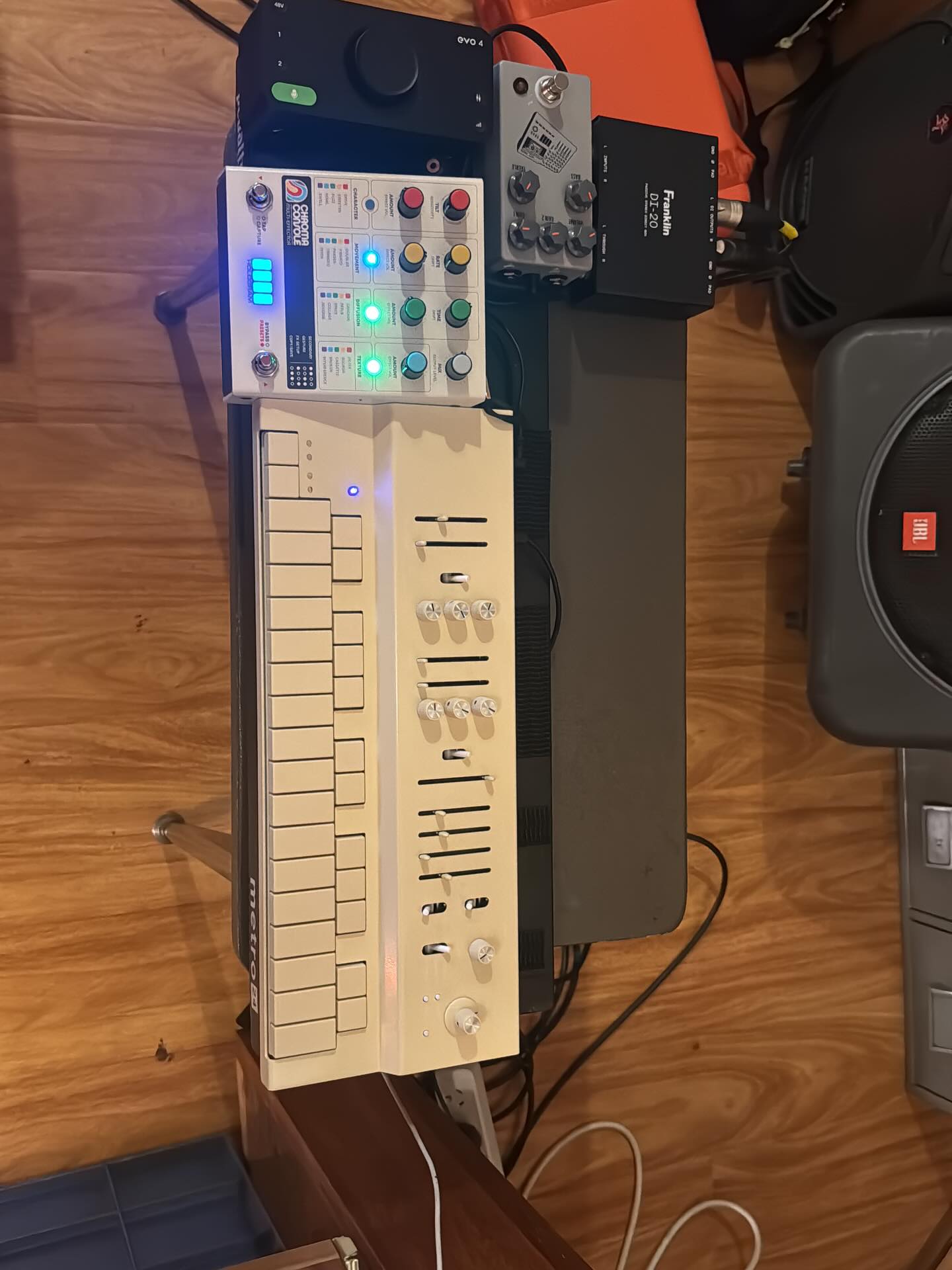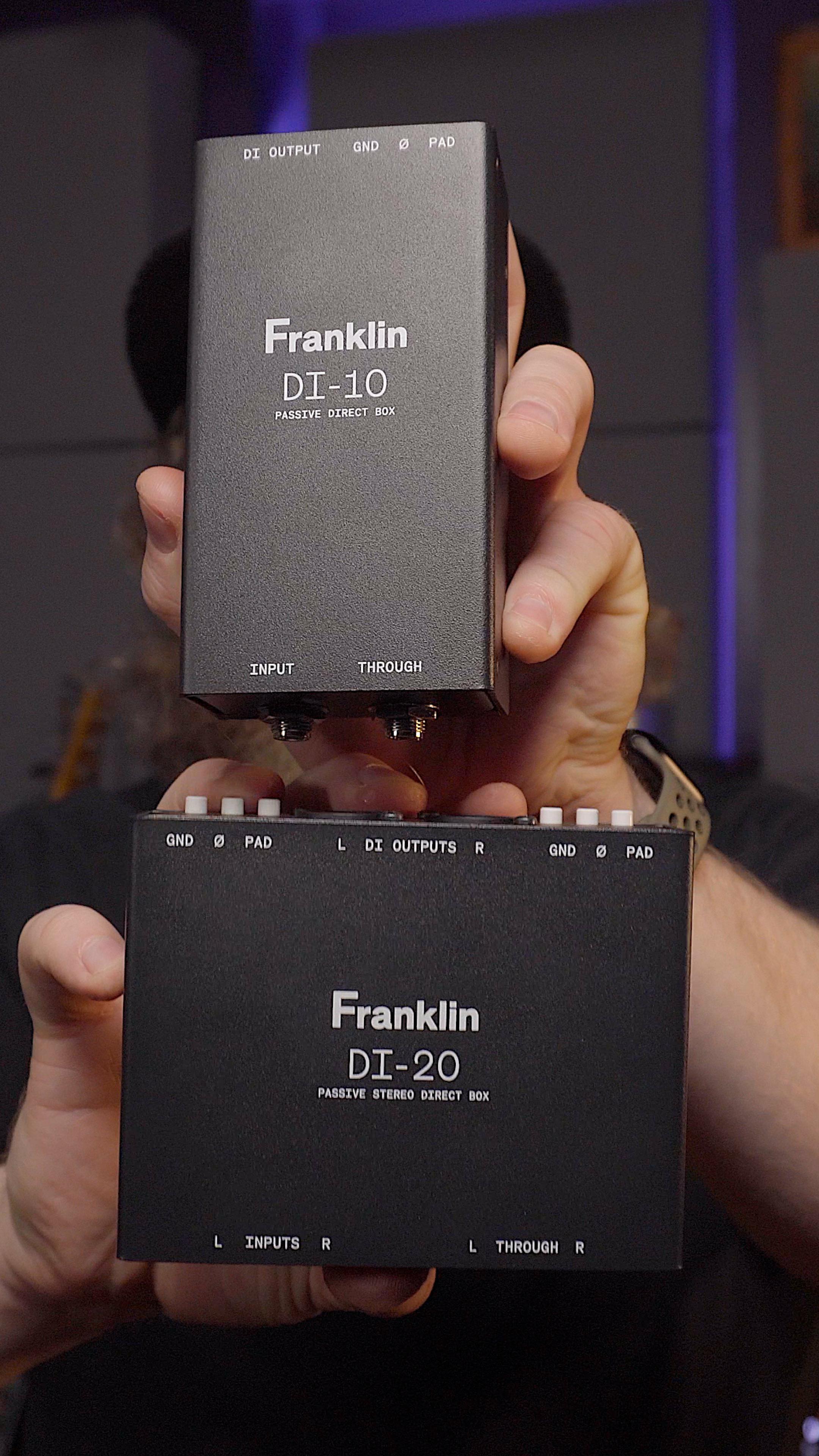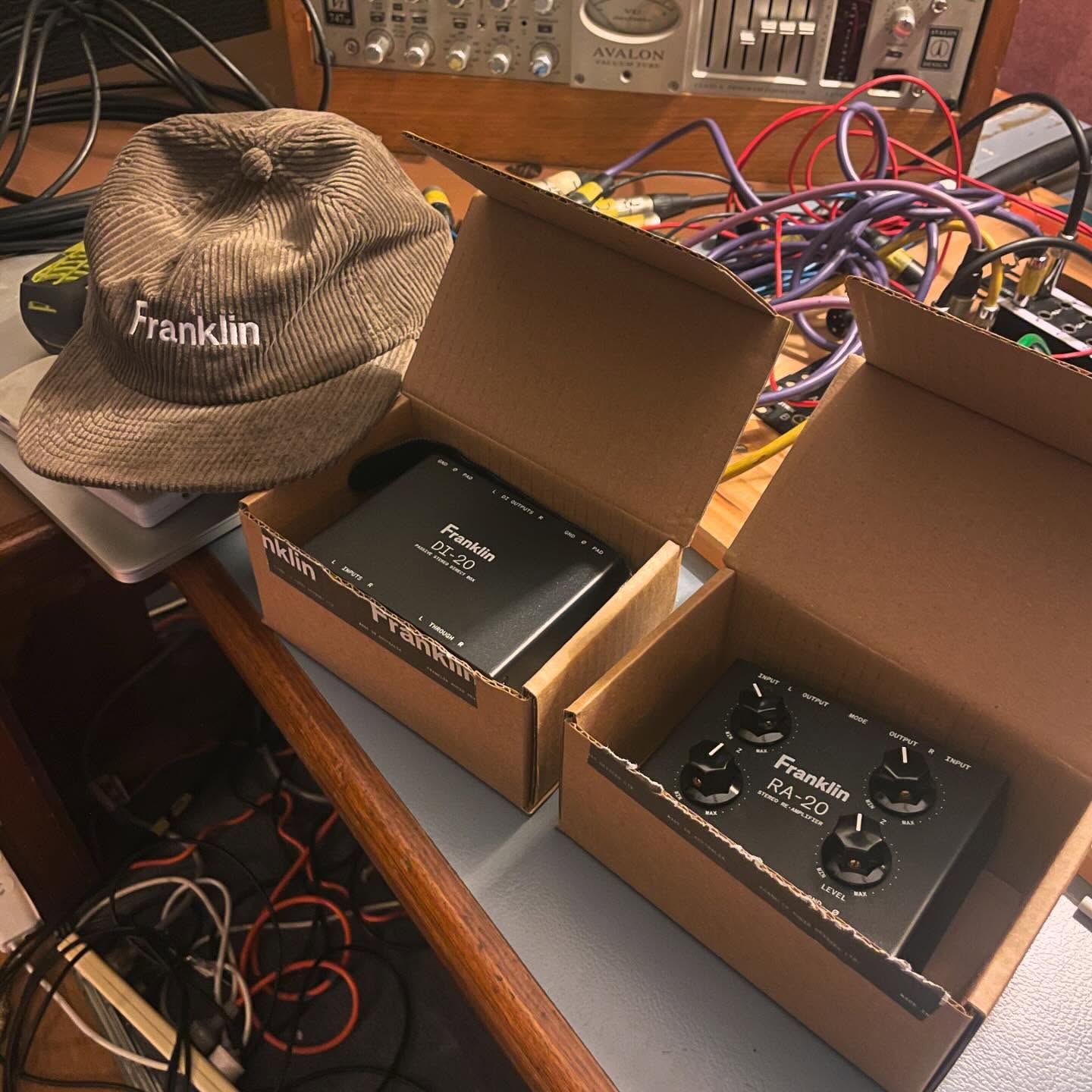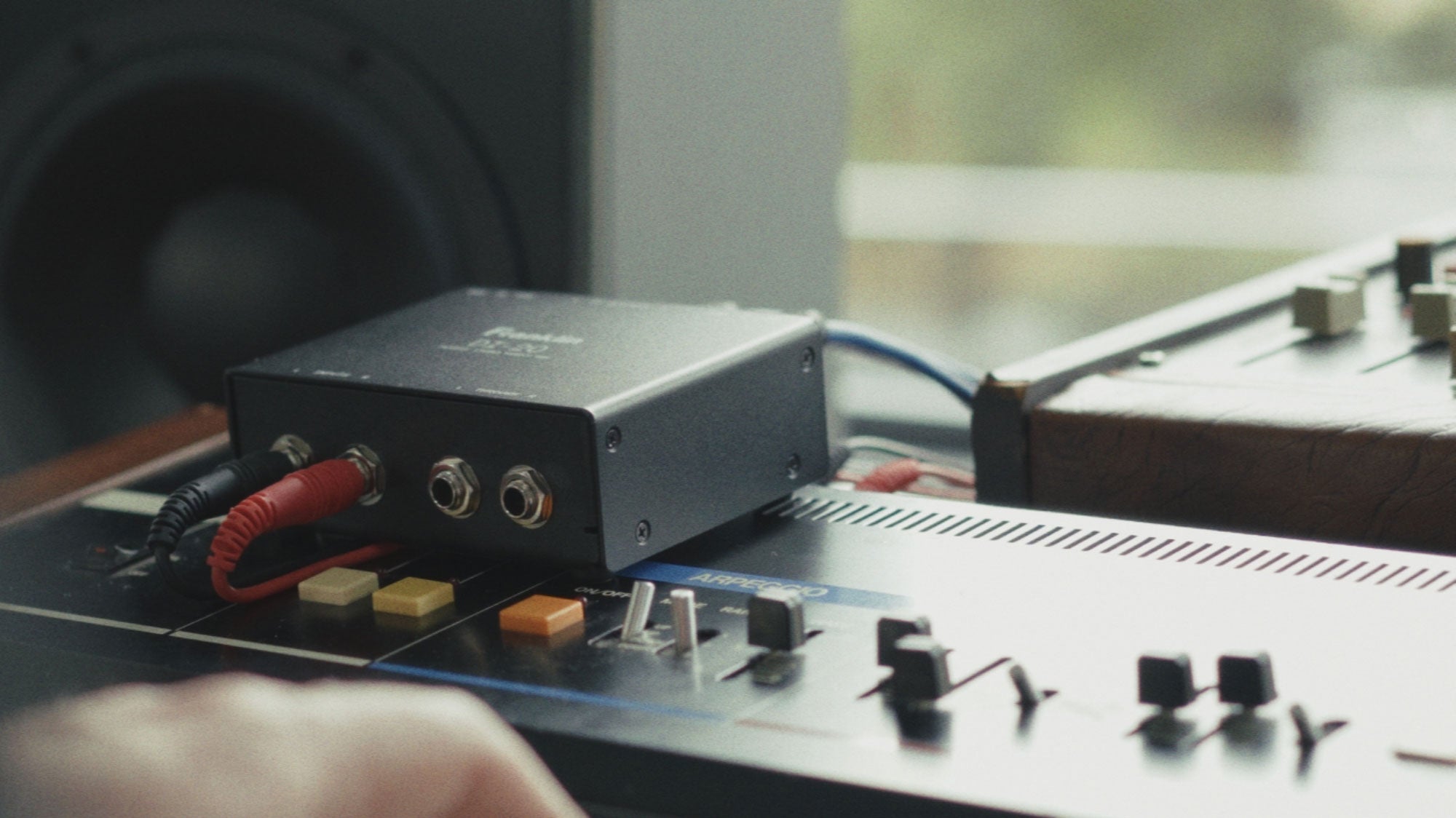Inputs
DI-20 Stereo Passive Direct Box
Low profile, high headroom. Now in stereo.
No hum, no headache, no tone shift—just a bulletproof stereo DI that gets out of the way. We made the DI-20 to our dream specs: dual custom-wound transformers for full-band frequency response and perfect isolation, high input impedance that feels natural to play through, and a low-profile enclosure that fits anywhere without demanding attention. The result is a DI that takes stereo keyboards, synths, and effects straight into mic preamps with zero noise and zero colouration—simple, reliable, and built to outlast everything else on your desk.
Connections
Inputs
2 x TS inputs for sources like synths, keyboards, drum machines, guitars and basses.
Outputs
DI balanced XLR outputs for sending to your audio interface or preferred mic preamp chain.
Throughs
Untouched copies of your original input signals for use in parallel processing, or sending to amps.
10-Year Warranty
We don't make anything that wouldn't be proud to have in our own studios, and we back our products 100%. That's why the DI-20 comes with a 10 year warranty.
Ordering from the EU? Read our customs and VAT policy.
In The Wild
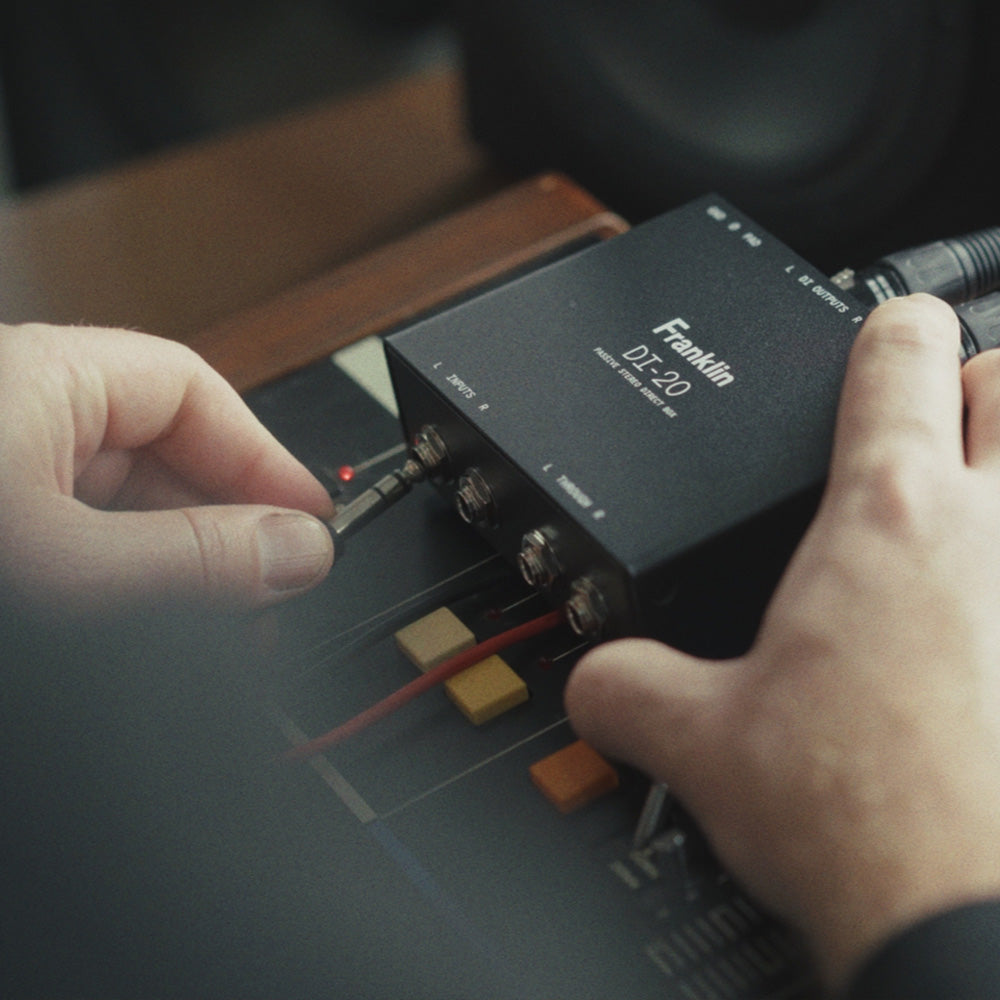
Plug in

Send It
